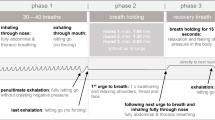Abstract
The wet and dry venom yields for most Australian native dangerous snakes and a number of non-Australian species are presented. Snakes from the Pseudonaja genus yielded higher than previously published amounts and suggest reconsideration be given to increasing the volume of antivenom in each vial. Higher percentage solids were obtained from venoms from the 4 cobra species (Naja) and Pseudechis genus included in this series.



Similar content being viewed by others
References
Allon N, Kochva E (1974). The quantities of venom injected into prey of different size by Vipera palaestinae in a single bite. J Exp Zool 188(1):71–75
Fiero MK, Seifert MW, Weaver TJ, Bonilla CA (1972). Comparative study of juvenile and adult prairie rattlesnake (Crotalus viridis viridis) venoms. Toxicon 10(1):81–82
Judge RK, Henry PJ, Mirtschin P, Jelinek G, Wilce JA (2006). Toxins not neutralized by brown snake antivenom. Toxicol Appl Pharmacol 213(2):117–125
Madaras F, Mirtschin PJ, Kuchel T (2005). Antivenom Development in Australia. Toxin Reviews 24:79–94. Taylor& Francis. Inc
Masci PP, Mirtschin PJ, Nias TN, Turnball RK, Kuchel TR, Whitaker AN (1998) Brown snakes (Pseudonja Genus): venom yields, prothrombin activator neutralization and implications affecting antivenom usage. Anaesth Intens Care 26:276–281
Morrison JJ, Pearn JH, Coulter AR (1982) The mass of venom injected by 2 elapidae: the taipan (Oxyuranus scutellatus) and the Australian tiger snake (Notechis scutatus). Toxicon 20(4):739–745
Morrison JJ, Charles NT, Pearn JH (1983) The use of experimental models to study the biting habits of Australian snakes in both “defensive”and “Hunting” bites. Toxicon 3:305–308
Morrison J, Pearn J, Covacevich J, Tanner C, Coulter A (1983–1984) Studies on the venom of Oxyuranus microlepidotus. Clin Toxinol 21(3):373–385
Sprivulis P, Jelinek GA, Marshall L (1996) Efficacy and potency of antivenoms in neutralizing the procoagulant effects of Australian snake venoms in dog and human plasma. Anaesth Intens Care 24:379–381
Sutherland SK, Tibballs J (2001) Australian animal toxins. Oxford University Press, Melbourne
Tibballs J, Sutherland SK (1991) The efficacy of antivenom in prevention of cardiovascular depression and coagulopathy induced by brown snake (Pseudonaja) species venom. Anaesth Intens Care 19:530–534
White J (1995) CSL antivenom handbook. CSL Ltd, Melbourne
Author information
Authors and Affiliations
Corresponding author
Rights and permissions
About this article
Cite this article
Mirtschin, P.J., Dunstan, N., Hough, B. et al. Venom yields from Australian and some other species of snakes. Ecotoxicology 15, 531–538 (2006). https://doi.org/10.1007/s10646-006-0089-x
Accepted:
Published:
Issue Date:
DOI: https://doi.org/10.1007/s10646-006-0089-x




